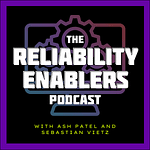This episode covers Chapter 2 of the Site Reliability Engineering book (2016). In this first part, we talk about the intricacies of data center design outlined in the book. One thing is for sure. Building a data center for your own needs is HARD work with many considerations you must make.
Here are key takeaways from our conversation:
Importance of understanding data center fundamentals: Even if you're not operating at the scale of companies like Google, understanding the fundamentals behind data center infrastructure can help. This knowledge can inform decisions on cloud services, high availability strategies, and the architectural design of systems to ensure resilience and scalability.
The impetus to leverage cloud infrastructure: The transition from traditional on-premises infrastructure to cloud-based solutions is a critical trend. Organizations can learn from how tech giants manage resources efficiently at scale, to improve their resource allocation.
Cyclical trends in technology adoption: trends in technology are cyclical and that can inform strategic decisions. As there's a current discussion around moving from cloud-centric models back to more traditional data center approaches, understanding the history and evolution of tech infrastructure can prepare organizations to adapt to and anticipate future shifts in the technological landscape.








